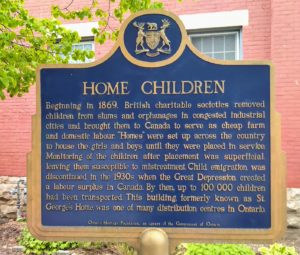Read the Following Selection
Read the following selection, or click on the play button below to listen aloud.
Home Children
Poverty was everywhere on the streets of London, England, in the late 1800s. Especially affected were the many children who were orphaned and homeless. Some groups decided these children would have a chance for a better life in Canada. The children who were sent to the new country became known as “home children.”
Sailing to Canada
These tiny immigrants were given the name “home children” because many of them had lived in orphanages, also known as homes. The migration was started by a number of women who felt sorry for the poverty-stricken children. They thought the clean air of Canada, and a chance to work and earn some money, would be wonderful for the children. The home children sailed to Canada in large groups. Most of them were between the ages of 8 and 16, with some as young as 4.
Difficult Times
When the children arrived in Canada, they were sent to various towns. They had no say about where they went. Many of the boys ended up on farms, where they worked in the field. One boy later said, “You would have thought that he was purchasing a horse, the way he sized up my forehead, body, and legs.”
The girls were usually assigned household chores, on farms or in homes in towns. They were expected to do this work in exchange for a place to sleep, food, a small allowance, and the chance to go to school.
That would have been a real improvement over their old lives, but it was not the reality for many of the home children. Often they were treated like servants, and whipped and beaten. Some were starved.
Split Families
Also very difficult was that brothers and sisters were often separated, and sent to different farms or towns. “The brothers and sisters were all together,” one home child said later. “And then they started grabbing the girls away from their brothers. I can still hear the screams of these kids being separated. Some of them never saw their sisters again.”
The Home Children Grow Up
The home children program ended in the 1930s. More and more people became aware that the children were being unfairly treated. It was also revealed that the organizers back in Britain were making money by providing the children as cheap labour. Canadians felt these actions were wrong, as was taking the children from their home country. Many of the home children never returned to England. When they were old enough to leave the farms and homes where they had been placed, they got better-paying jobs, settled down, and made a new life in Canada.
Now, show what you know!
Complete some questions about the reading selection by clicking “Begin Questions” below.










